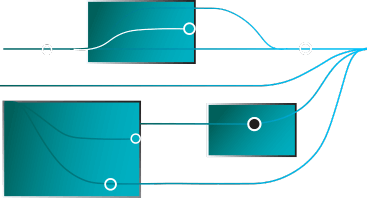Is Web Automation Testing Important?

Despite the increase in mobile app usage, websites remain a key point of contact between organizations and consumers. With digital technologies transforming the business landscape, web apps have become essential business enablers.
Today, test cycles need automation to keep up with the development speed, release, and consequent updates. Research shows web automation lowers the testing hours, effort and arising errors.
Whether you are a developer, tester, or tech enthusiast, understanding Web Automation is key to navigating the complexities of today's web environments.
What is Web Automation?
Web automation is the practice of automating tasks and actions performed on websites or web applications. It involves utilizing automated testing tools for web applications, and scripts to simulate user interactions. These tools can also automate repetitive or complex actions on web page testing automation.
In the context of Automated Web Testing, it executes a suite of tests against a web application. This approach is crucial for maintaining the quality and reliability of web applications in a cost-effective and time-efficient manner.
Do more with Test Automation
Discover more ways to add ‘low-code no-code‘ test automation in your workflows

Automation Approaches for Different Types of Web Applications
| Web Application Type | Characteristics | Automation Approach | Tool Requirements |
|---|---|---|---|
| Static Websites | Simple, with fixed content. | Straightforward automation focusing on validating content and links | Tools with basic capabilities for navigating web pages and verifying static content. |
| Dynamic Web Applications | Interactive elements; content changes based on user actions or time. | Requires sophisticated tools to handle interactive elements and dynamically changing content. | Tools that support real-time interaction simulation, and dynamic content handling. |
| Single-Page Applications | Asynchronous requests and responses, content updates without page reloads. | Automation must effectively mimic user interactions and wait for elements to load or update. | Automation must effectively mimic user interactions and wait for elements to load or update. |
SUGGESTED READ - Desktop Application testing vs Website application testing
How to Build Web Automation?
Building Web Automation involves a series of steps, starting from defining the test strategy to selecting the right tools and writing scripts.
Identify the Test Scenario
Define what you want to automate website actions, such as testing the login functionality of a web application.
Choose Web Automation Tools
Select web automation tools that best fit the needs of your project. Tool like ACCELQ is popular for automated web testing software due to their versatility and support for multiple programming languages.
Write the Test Script
Based on the tool selected, write a script that automates the login process. For instance, you would write a script to navigate to the login page, enter the username and password into the respective fields, click the login button, and verify the login was successful.
Execute the Test
Run the script using your web automation tool. The tool will simulate the user actions as defined in your script and provide results on the test execution.
How to Execute Web Automation?
For Web Automation to work well, the setup must be as close as possible to the production system. Part of this involves setting up the web automation tools and surroundings (like browsers and operating systems) to ensure they work well together and are accurate. You can run executions by hand or add them to continuous integration/continuous deployment (CI/CD) processes to run them automatically.
During execution, the automated web testing software acts like a user would on the web application and records what happens. Then, it compares what happened to what was predicted. Web automation tools often come with thorough logs and reports to help you find problems or ensure the app works as planned.
For web automation testing to work well, scripts need to be maintained and kept up to date with application changes. This ensures that tests are still useful and relevant.
Web Automation Use Case: Streamlining E-commerce Operations
Scenario Overview
An e-commerce platform must constantly update inventory levels and alter prices based on market trends. Due to variable product demand, it must also provide targeted client communication based on buying behavior.
Web Automation Solution
Inventory Management: Automated scripts constantly monitor stock levels across several vendors and update the platform's inventory in real time. This guarantees that product listings are consistently correct, preventing overselling and understocking.
Dynamic Pricing: This strategy uses online automation to alter product prices in response to specified rules that consider rival pricing, demand, and stock levels. It maintains a competitive edge and increases profit margins.
Order Processing: Automation solutions streamline the process from when an order is placed by validating payment, updating inventory, and initiating shipping operations without manual interaction. It is for dramatically increasing order fulfillment speed.
Customer Engagement: Automated workflows send personalized emails or messages based on customer actions, such as cart abandonment or recent purchases, enhancing the customer experience through timely and relevant communication.
Outcome
- Increased Efficiency: Automation significantly reduces the time taken to update inventories, process orders, and respond to customer inquiries.
- Accuracy: Eliminates human errors in price updates, inventory management, and order processing, ensuring operational precision.
- Scalability: Enables the e-commerce platform to handle increased volumes of transactions and customer interactions without proportionally increasing the workforce.
- Customer Satisfaction: Improves the shopping experience through accurate inventory, timely communication, and swift order processing.
Overall Result
In this use case, Web Automation transforms the e-commerce operations landscape by automating key aspects of the business. By implementing such automation strategies, e-commerce platforms can achieve operational excellence. They can quickly adapt to market changes, and deliver superior customer experiences, ultimately driving growth and profitability.
Challenges in Web Automation Testing
| Challenge | Description |
|---|---|
| Dynamic Content | Automating tests for applications with frequently changing content requires sophisticated synchronization strategies. |
| Cross-Browser Compatibility | Ensuring that the application behaves consistently across different browsers and devices can be complex. |
| Maintaining Test Scripts | Keeping test scripts up-to-date with the evolving application features and functionality can be time-consuming. |
| Tool Selection | Selecting the right testing tools requires careful consideration of the application’s technology stack and testing needs. |
| Unpredictability | External factors such as network issues, timing problems, or environmental differences can lead to inconsistent test results. |
How to Determine the Web Automation Tools?
Selecting the right web automation tools for web applications is pivotal for the success of your web automation efforts. Consider the following criteria:
- Compatibility: Ensure the tool supports JavaScript frameworks and your target systems and browsers.
- Easy Use: Tools with comprehensive documentation and a simple interface shorten learning curves and boost efficiency.
- Community and Support: Professional and community support can help troubleshoot and learn best practices.
- Integration: Your CI/CD pipeline must integrate with version control and build systems.
- Cost: Consider the tool’s licenses, maintenance, and infrastructure costs, as well as the initial expenditure.
By carefully evaluating these factors, you can choose a tool that fits your needs and enhances your web automation testing capabilities.
Conclusion
Organizations can now choose comprehensive codeless web test automation platforms with AI-powered natural language automation and a next-gen recorder. These tools help teams automate quickly while eliminating maintenance needs.
These platforms also automate test design, maximizing coverage and reusability. They allow testers to develop test scenarios based on predictive analytics and path analysis. Auto-test generation capabilities further accelerate the testing process and add agility to the development process.
Connect with us to see how we can augment your web automation testing initiatives and help you deliver winning software products into the market.
Geosley Andrades
Director, Product Evangelist at ACCELQ
Geosley is a Test Automation Evangelist and Community builder at ACCELQ. Being passionate about continuous learning, Geosley helps ACCELQ with innovative solutions to transform test automation to be simpler, more reliable, and sustainable for the real world.
Discover More
 ACCELQ API Test Automation
ACCELQ API Test Automation
ACCELQ API Test Automation
 10 Benefits of Codeless Test Automation
10 Benefits of Codeless Test Automation
































